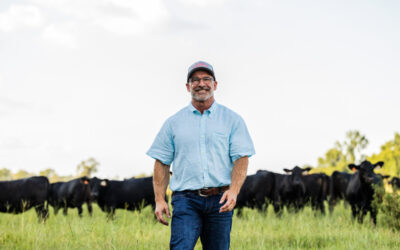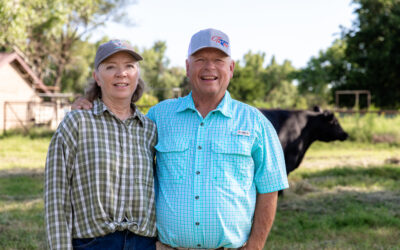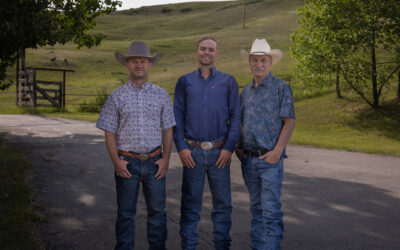
Willis Ranch Earns Commercial Commitment to Excellence award
The Wyoming ranch was recognized at Certified Angus Beef’s 2025 Annual Conference.
by Morgan Boecker
September 29, 2025
“With all the technology and tools that we have at our hands today, you can have it all,” Jordan Willis says. “But you still need to be a cattleman and you still got to have an eye for cattle.”
Six generations of Willises have made a living on their ranch lands in Wyoming and Utah. But only the last two have turned out Angus cows.
“We always bought the best genetics we could possibly afford,” Jordan’s mom, Linda, says. “With Angus, we felt that we got the quality and the production we wanted.”
For Willis Ranch, the best Angus cattle thrive in the high desert and produce calves that can become productive replacement females or high-quality carcasses.
Their decades-long and successful mission to produce truly premium beef earned the Willis family the 2025 Commercial Commitment to Excellence award from Certified Angus Beef (CAB). They were recognized at the brand’s annual conference in September.
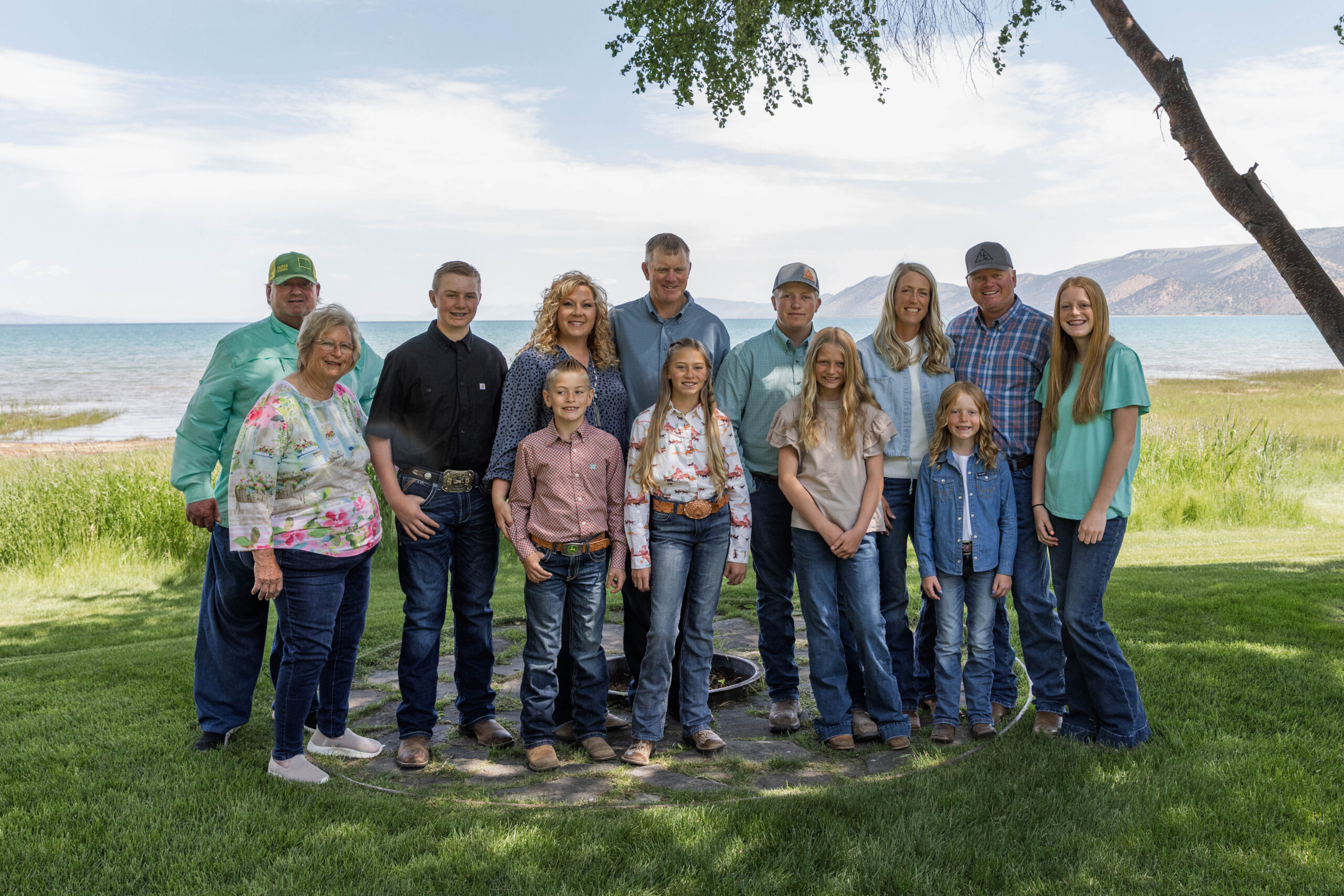
Developing the herd
Brothers Jordan and Jed manage the Angus cows while James grows crops that feed the cattle. Jordan’s wife, Jennie, provides support, whether it’s feeding the crew, running errands, hauling bulls or her favorite job, baling hay.
Jordan is always learning new tricks of the trade by attending meetings and trying new programs to stay on the leading edge of what’s new, Jed says.
In their search for genetics that meet their checklist, they found a seedstock partner in Basin Angus in Montana and began buying bulls there.
Jordan likes maternal, well-rounded cows to work in their high desert environment. Not only is she raising replacement heifers, but also the calves that carry carcass merit to qualify for the Certified Angus Beef ® brand.
The Willises rely on available tools for what the eye of a stockman can’t measure, such as expected progeny differences (EPDs) and DNA testing. For 13 years, Jordan has used GeneMax® Advantage™ to select replacement heifers. These tools are his means to a highly marketable calf crop—whether he’s selling heifers or feeder calves–and a premium end product.
Taking tissue samples at branding allows time to get data back, analyze it and use that information chute-side during preconditioning and sorting calves at weaning.
Every year, calves are better because of their investment in tools like GeneMax.
“My theory is that it takes as much grass or feed or resources to feed a poor animal. You may as well have a good one,” Jordan says.
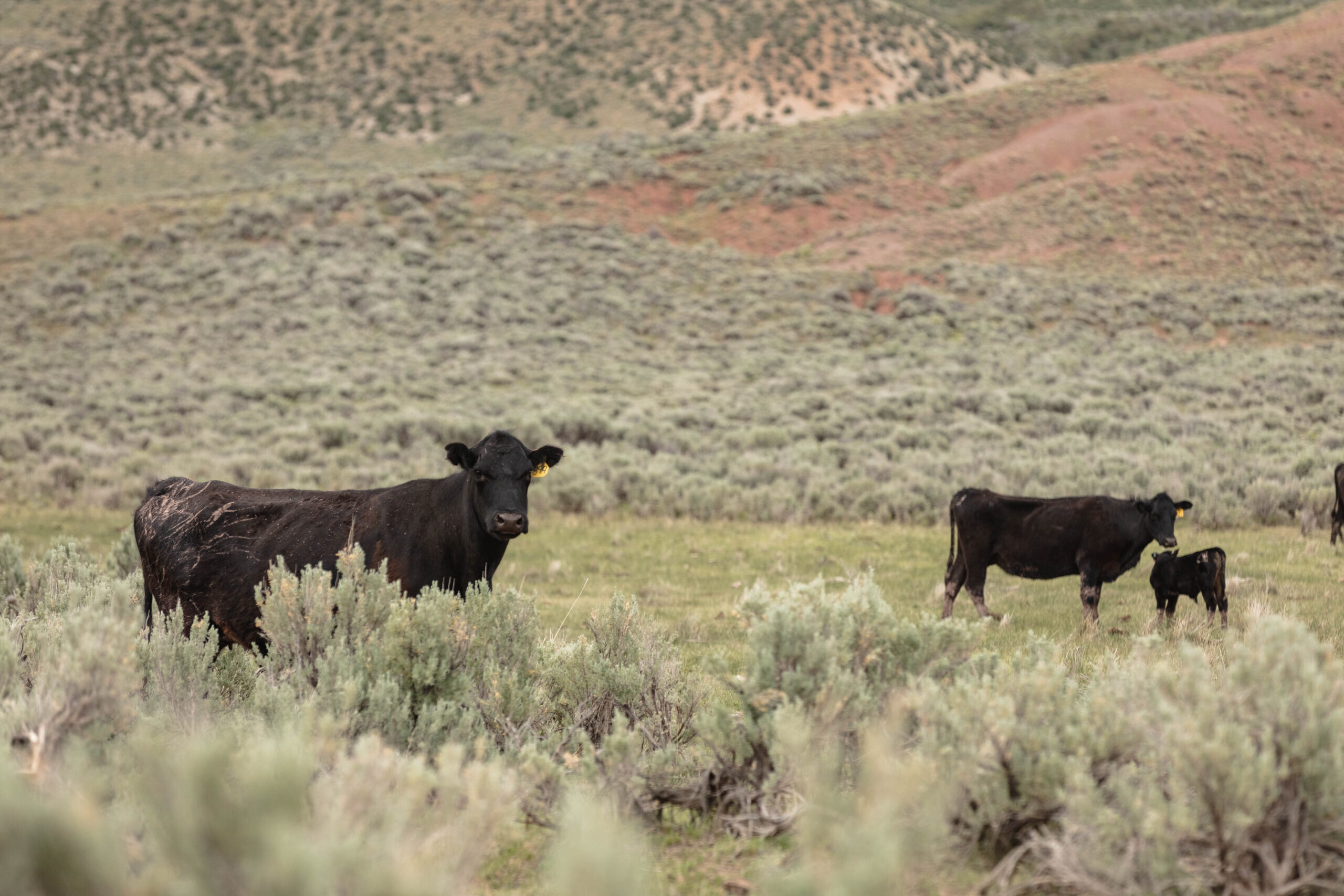
Following a marketing plan
The females are bought by Noble Ranch in Colorado to be developed into bred heifers. Ryan Noble, commercial rancher, and Jordan met through Basin Angus.
“Between the elevation challenges, long, tough winters and sparse range conditions in the summer, every cow is tasked with bringing home a calf that will get on a truck and go out to add value to whomever buys it,” Noble says. “It’s a daunting challenge, but Willis Ranch seems to have put all of the pieces together.”
Noble says he buys a lot of heifers from several states, but when other cattlemen stop to visit, “it seems like we always take a few extra minutes to look at the Willis heifers because of the obvious quality and uniformity.”
The steers are marketed with AngusLinkSM at weaning. They enroll in the AngusVerifiedSM and Genetic Merit ScorecardSM (GMS). While AngusVerified guarantees calves are at least 50% Angus (sired by a registered Angus bull), GMS describes genetic potential for a group of feeder calves. It bridges a gap between buyers and sellers, giving their customers insight into how calves should perform at the feedyard.
“So many cattle are sold on video auctions,” Jordan says. “How do you distinguish yourself from the others? AngusLink provides that tool.”
Recent carcass data from multiple calf crops representing more than 1,500 head revealed the Willis calves achieved 52% Prime and 94% upper 2/3 Choice.
Not by chance, but by a deliberate and consistent drive to produce a highly desirable product.
“The market isn’t always going to be this great,” Jordan says. “And you need to keep moving your herd forward because when the market goes down, you’re going to need the cow herd and the programs to make ends meet.”
It takes everyone
The Willis family is blessed by numbers. The days they move cows are a sight—nine young cowboys and cowgirls atop their horses (or four-wheelers) peek out above the sagebrush.
While the ranch has grown in quantity and quality, their “why” is the same.
“We love cattle, love family, love being ranchers, love helping people and taking care of people,” Linda says. “And cooking dinner for them even.”
They feed a big crew but know their daily work puts beef on many family tables.
“When other moms are at the grocery store, I hope they look for the Certified Angus Beef logo and they take that home to their families and feel like they have bought something really, really delicious and nutritious for their family,” Jennie says.
They want to provide the same thing for their family. That’s why it’s important to hit a high target, like CAB, Jordan says.
When the target moves higher, they’ll adjust to meet it.
You may also like
Smitty’s Service on CAB Board
Lamb continues to find himself struck by just how far-reaching the Angus breed has become. The brand’s growing demand and rising prime carcasses left a strong impression. He hopes everyone recognizes the vital connection built between consumers and Angus producers. Humbled by the opportunity to serve, Lamb reflects on his time as chairman with gratitude.
Zybach Angus Receives Certified Angus Beef Progressive Partner Award
Steve Zybach’s vision for smaller Angus producers to get more value for their calves through feeder calf sales with value-added programs led him to be recognized as the 2025 CAB Progressive Partner.
Cross Cattle Company earns Certified Angus Beef Canadian Commitment to Excellence award
Using disciplined breeding, genetics and hands-on management to raise Angus cattle that consistently hit high standards, Cross Cattle Company’s focus on quality earned them the 2025 Canadian Commitment to Excellence award.

